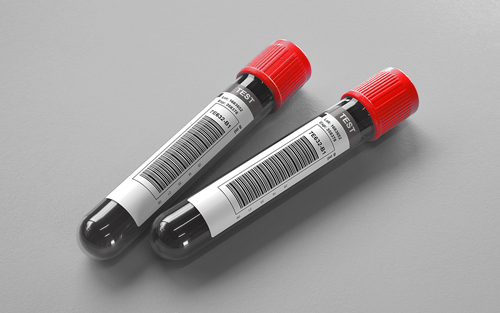Heavy Metals Panel 3, Urine with Reflex to Arsenic Fractionated
Ordering Recommendation
Useful in the assessment of acute and chronic exposure to arsenic, mercury, and lead. The preferred test for the assessment of lead exposure is Lead, Blood (Venous) (0020098). For occupational exposure, consider Lead, Industrial Exposure Panel, Adults (0025016) and/or Cadmium Exposure Panel - OSHA (0025013).
New York DOH Approval Status
Specimen Required
Diet, medication, and nutritional supplements may introduce interfering substances. Patients should be encouraged to discontinue nutritional supplements, vitamins, minerals, non-essential over-the-counter medications (upon the advice of their physician), and avoid shellfish and seafood for 48 to 72 hours. High concentrations of iodine may interfere with elemental testing. Collection of urine specimens from patients receiving iodinated or gadolinium-based contrast media should be avoided for a minimum of 72 hours post-exposure. Collection from patients with impaired kidney function should be avoided for a minimum of 14 days post- contrast media exposure.
24-hour or random urine collection. Specimen must be collected in a plastic container and should be refrigerated during collection. ARUP studies indicate that refrigeration of urine alone, during and after collection, preserves specimens adequately if tested within 14 days of collection.
Transfer 8 mL aliquot from a well-mixed collection to ARUP Trace Element-Free Transport Tubes (ARUP supply #43116). Available online through eSupply using ARUP Connect™ or contact ARUP Client Services at (800) 522-2787. (Min: 2 mL)
Refrigerated. Also acceptable: Room temperature or frozen.
Urine collected within 72 hours after administration of iodinated or gadolinium-based contrast media. Acid preserved urine. Specimens contaminated with blood or fecal material. Specimens transported in non-trace element-free transport tube (with the exception of the original device).
Record total volume and collection time interval on transport tube and on test request form.
Ambient: 1 week; Refrigerated: 2 weeks; Frozen: 1 year
Methodology
Quantitative Inductively Coupled Plasma-Mass Spectrometry
Performed
Sun-Sat
Reported
1-5 days
Reference Interval
| Test Number |
Components |
Reference Interval |
|||||||||||||||||||||
|---|---|---|---|---|---|---|---|---|---|---|---|---|---|---|---|---|---|---|---|---|---|---|---|
| Creatinine, Urine - per 24h |
|
||||||||||||||||||||||
| Arsenic Urine - per volume | 0.0-34.9 µg/L | ||||||||||||||||||||||
| Arsenic Urine - per 24h | 0.0-49.9 µg/d | ||||||||||||||||||||||
| Mercury, Urine - per 24h | 0.0-20.0 µg/d | ||||||||||||||||||||||
| Mercury, Urine - per volume | 0.0-5.0 µg/L | ||||||||||||||||||||||
| Mercury, Urine - ratio to CRT | 0.0-20.0 µg/g CRT | ||||||||||||||||||||||
| Arsenic, Urine - ratio to CRT | 0.0-29.9 µg/g CRT | ||||||||||||||||||||||
| Lead, Urine - per 24h | 0.0-8.1 µg/d | ||||||||||||||||||||||
| Lead, Urine - per volume | 0.0-5.0 µg/L | ||||||||||||||||||||||
| Lead, Urine - ratio to CRT | 0.0-5.0 µg/g CRT |
Interpretive Data
Quantification of urine excretion rates before or after chelation therapy has been used as an indicator of lead exposure. Urinary excretion of >125 mg of lead per 24 hours is usually associated with related evidence of lead toxicity.
Urinary mercury levels predominantly reflect acute or chronic elemental or inorganic mercury exposure. Urine concentrations in unexposed individuals are typically less than 10 µg/L. 24 hour urine concentrations of 30 to 100 µg/L may be associated with subclinical neuropsychiatric symptoms and tremor while concentrations greater than 100 µg/L can be associated with overt neuropsychiatric disturbances and tremors. Urine mercury levels may be useful in monitoring chelation therapy.
The ACGIH Biological Exposure Index (BEI) for arsenic in urine is 35 µg/L. The ACGIH BEI is based on the sum of inorganic and methylated species. For specimens with elevated total arsenic results, fractionation is automatically performed to determine the proportions of inorganic, methylated and organic species.
Per 24h calculations are provided to aid interpretation for collections with a duration of 24 hours and an average daily urine volume. For specimens with notable deviations in collection time or volume, ratios of analytes to a corresponding urine creatinine concentration may assist in result interpretation.
This test was developed and its performance characteristics determined by ARUP Laboratories. It has not been cleared or approved by the US Food and Drug Administration. This test was performed in a CLIA certified laboratory and is intended for clinical purposes.
Laboratory Developed Test (LDT)
Note
If total arsenic concentration is found to be elevated based on reference intervals, then Arsenic, Fractionated, will be added to determine the proportion of organic, inorganic, and methylated forms. Additional charges apply.
Hotline History
CPT Codes
82175; 83655; 83825; if reflexed, add 82175
Components
| Component Test Code* | Component Chart Name | LOINC |
|---|---|---|
| 0020207 | Creatinine, Urine - per volume | 35674-1 |
| 0020208 | Creatinine, Urine - per 24h | 2162-6 |
| 0025001 | Arsenic Urine - per volume | 30924-5 |
| 0025002 | Arsenic Urine - per 24h | 5587-1 |
| 0025051 | Mercury, Urine - per 24h | 6693-6 |
| 0025052 | Mercury, Urine - per volume | 30921-1 |
| 0025054 | Mercury, Urine - ratio to CRT | 13465-0 |
| 0025058 | Arsenic, Urine - ratio to CRT | 13463-5 |
| 0025061 | Lead, Urine - per 24h | 5677-0 |
| 0025062 | Lead, Urine - per volume | 30931-0 |
| 0025065 | Lead, Urine - ratio to CRT | 13466-8 |
| 0097110 | Total Volume | 19153-6 |
| 0097111 | Hours Collected | 30211-7 |
Aliases
- Hb
- Lead
- Mercury
- Urine AS concentration
- Arsenic
- Mercury concentration
- Pb
- Urine AS
- Urine concentration
















